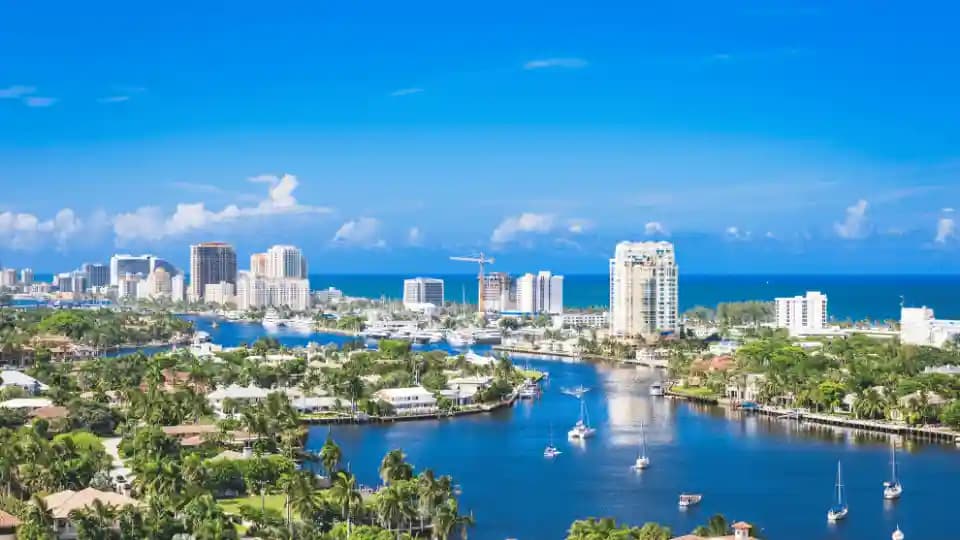The EB-5 visa is one of the most sought-after pathways for moving to the USA, offering permanent residency through investment and job creation. The EB-5 Reform & Integrity Act (RIA) 2022 introduced changes to reserved visa categories and concurrent filing, affecting the demand-supply dynamics for this program.
For program basics, see EB-5 overview and USA immigration services.
What Exactly Is the EB-5 Visa?
The EB-5 visa allows foreign nationals to obtain permanent residency in the United States by investing in a new commercial enterprise and creating at least 10 full-time jobs.
Investment thresholds:
- $1,050,000 in a non-Targeted Employment Area (non-TEA)
- $800,000 in a Targeted Employment Area (TEA) (high-unemployment area)
The visa allows the investor and their family to settle, work, and travel anywhere in the U.S. without employer sponsorship.
Impact of the EB-5 Reform & Integrity Act 2022 (RIA)
The RIA 2022 introduced reserved visa categories and concurrent filing (I-526E + I-485), allowing some investors to bypass pre-RIA backlogs. These changes have led to a surge in demand, particularly for real estate and regional center investments.
Increased Demand
- Faster processing for TEA regional center projects
- Profitable real estate investments attracting high-net-worth individuals
- Significant interest from both rural and urban TEA projects
Reserved Visa Categories
Reserved categories aim to allocate visas for specific investment types, including:
- Rural projects
- High-unemployment TEAs
- Infrastructure projects
For FY2024, 8,136 EB-5 visas were allocated under reserved categories.
Calculating the EB-5 Visa Waitlist
Factors Influencing Waitlists
-
Approval Rate
- FY2023 I-526E approval rate: 100% (63 petitions approved)
- Historical I-526 approval: fluctuated between 49%–92% depending on the year
-
Family Size
- Each petition may include spouse and children, impacting visa demand
-
Visa Category Demand
- Rural: Estimated demand 1,312–2,951 visas
- Urban TEA: Estimated demand 2,622–5,900 visas
Aggregate Supply of Reserved Visas
Rural Area (FY2024 & FY2025):
- Newly available FY2024 visas: 2,286
- Carryover from FY2023: 2,799
- Estimated total supply (if all unused carryover included): 4,345 visas
High-Unemployment Area (FY2024 & FY2025):
- Minimum supply: 2,173 visas
- Maximum supply (all carryover used): 3,572 visas
Observation: Supply in rural areas is sufficient to meet current demand, while urban TEA categories may face shortfalls.
Conclusion
- Rural EB-5 visas appear sufficient to meet demand, assuming carryover visas remain unused.
- Urban TEA visas may require USCIS productivity improvements to meet investor demand.
- Limiting derivative family members from annual visa counts could reduce waitlists.
- Continued monitoring of I-526/E approvals and AOS usage is critical for future planning.
For one-on-one guidance: EB-5 Consultation • Contact XIPHIAS
FAQs
Q1. What did the RIA 2022 change for EB-5 applicants? A. Introduced reserved visa categories and enabled concurrent filing, reducing backlogs and improving timelines.
Q2. How do family members affect EB-5 visa availability? A. Derivatives (spouse/children) count against the annual visa quota, increasing waitlists.
Q3. What drives EB-5 wait times? A. USCIS processing speed, approval rates, family size, and consular vs. AOS usage patterns.
Q4. Do rural projects move faster? A. Rural-reserved visas have dedicated supply and carryover, which may reduce wait times compared to urban TEA projects.



